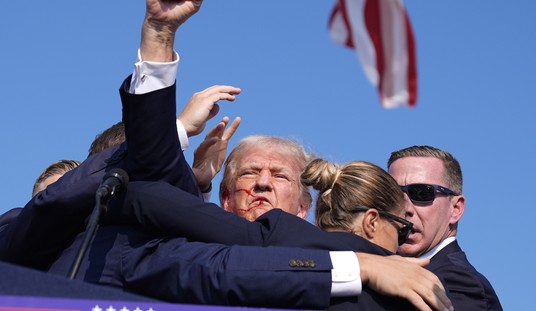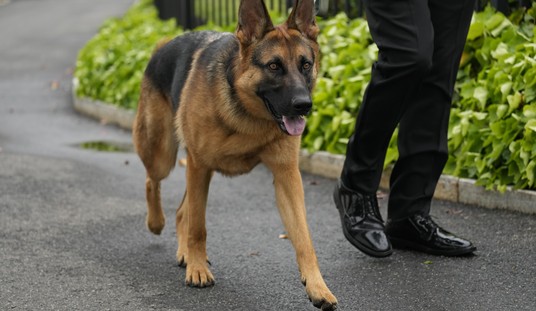The beating of journalist Steven Crowder by union supporters in Michigan highlights once again the role that extra-judicial intimidation plays in politics. We like to think that politics is about reasoned and civil debate. It never has been. The classic left wing understanding of politics was articulated by Mao Tse Tung.
Every Communist must grasp the truth; “Political power grows out of the barrel of a gun. … Experience in the class struggle in the era of imperialism teaches us that it is only by the power of the gun that the working class and the laboring masses can defeat the armed bourgeoisie and landlords; in this sense we may say that only with guns can the whole world be transformed.
Left wing ideologues aren’t against guns or violence. They are only opposed to others breaking their monopoly on violence. A gun for me but not for thee is fine by them. Since this means only one side can have a monopoly street intimidation historical demagogues sponsored rival groups of thugs. For example Hitler created his own cadre of goons and his own labor unions. The Nazi labor union was called Deutsche Arbeitsfront.
And just look at the benefits they got for their members too.
Its leader was Robert Ley, who stated its aim as ‘to create a true social and productive community’ (Smelster, 1988). Theoretically, the DAF existed to act as a medium through which workers and owners could mutually represent their interests. Wages were set by the 12 DAF trustees. The employees were given relatively high set wages, security of work, dismissal was increasingly made difficult, social security programmes were started by the Arbeitsfront, leisure programmes were started, canteens, pauses and regular working times were established, and therefore generally the German workers were satisfied by what the DAF gave them in repaying for their absolute loyalty.
Employment contracts created under the Weimar Republic were abolished and renewed under new circumstances in the DAF. Employers could demand more of their workers, while at the same time workers were given increased security of work and increasingly enrolled into social security programmes for workers. The organisation, by its own definition, combated capitalism, liberalism, but also revolution against the factory owners and the national socialist state. The DAF however did openly prefer to have large companies nationalised by the German state, instead of privately owned companies.
And he famously created his own thugs, the Sturmabteilung or Stormtroopers. His rise to power in large part consisted of battles between Sturmabteilung versus the Rotfrontkämpferbund. For it goes without saying that the Left had its own unions and thugs.
The Rotfrontkämpferbund or Rotfront as it was known for short, was “a paramilitary organization under the leadership of the Communist Party of Germany during the Weimar Republic that increasingly squared off against the Storm Detachment or Assault Division, or Brownshirts who were then the paramilitary wing of the Nazi Party.” We know from history that the Stormtroopers won, in part from their brutality and in part because they had nicer uniforms.
Hugo Boss started his clothing company in 1924 in Metzingen … the same year, he became a member of the Nazi party and a sponsoring member (“Förderndes Mitglied”) of the Schutzstaffel (SS) … He joined the German Labour Front in 1936 … Though he claimed in a 1934/1935 advertising that he had been a “supplier for Nazi uniforms since 1924”, such supplies are probable since 1928/1929 and certain since 1934, when he became an Reichszeugmeisterei-licensed (official) supplier of uniforms to the Sturmabteilung, Schutzstaffel, Hitler Youth, National Socialist Motor Corps, and other party organizations
The nice uniforms were a brilliant touch. “Radical chic” is compounded of one part danger, one part fashion and one part hogwash. Perhaps the reason why it’s never been as cool to be a Tea Party member as to be a camp follower in Occupy Wall Street is that as a Tea Party member you don’t get to scare people. In Occupy Wall Street you get to do ‘edgy’ things.
Street pressure is an important part of modern politics. People who wonder why liberals have such a difficult time competing against totalitarian or Islamic ideologies in Syria, Egypt or Libya need only look to history to understand why. The Jihadis have all the cool uniforms and scarves. That and AK-47s. Uniforms and bad boys make a mix that some girls find it hard to stay away from. The great tragedies of the 20th century had their origin, not in dry debate, but in the Battle of the Bads on German city streets.
It is not for nothing that the Democratic party has cultivated a long association with organized labor. It gives them access to a pool of rough and ready people that extends into links with organized crime. It thus gives them a mix of capabilities that while not comparable to the gangs of yesteryear still creates an intimidation factor. Sometimes it’s not what you have but what others think you have that counts the most.
And who knows? They may have it after all.
Hitting Crowder was a signal. We can do this to you. ‘What are you going to do about it?’ Well what should one do about it? The issue that the Steven Crowder mauling incident raises is whether America will pursue the path of peaceful political discourse or whether it will degenerate into the Battle of the Bads.
In 1932, Daniel Guérin, a French homosexual writer, was traveling through Germany and had a chance to watch Hitler’s rise to power. Like many others, he too was drawn to the masculine romance of the street, which resulted in his book, The Brown Plague.
Like Christopher Isherwood and Stephen Spender, Guerin, a socialist and a homosexual, was drawn to Weimar Germany. It had the strongest workers’ party in Europe and, as Schwartzwald points out in his introduction, the emphasis on clean young men had an unmistakable erotic allure (“Sculptured knees emerged from Lederhosen. Legs were deeply tanned, muscles taut and hard. Thick socks tumbled down to strong, monumental shoes.”). Guerin made two trips, one in 1932 and another in the spring of 1933 following Hitler’s rise to power. Although Le Peste Brun originally included only the second journey, Guerin decided to add the earlier one. Unfortunately, it is of questionable value to anyone interested in how Germany appeared to outsiders as he decided to rewrite it when it strayed “from the essential topic: the rise of National Socialism.”
Of greater interest is the later material in which, willy nilly, Guerin’s comments on Communists and Social Democrats point to a connection between far left and far right. Not only did the Communist leadership come to see “Nazism as a necessary transitional stage on the road to proletarian dictatorship” but Guerin’s evidence suggests that workers steeped in the virulent anticapitalism and revolutionary struggle of Communists were ripe for the anti-Semitism and bloody chauvinism of the Nazis.
In other words despite their outward differences, Guérin recorded how much the two totalitarianisms had in common. It is often argued that the radical left is but one part of the spectrum of democracy. That is incorrect. Democracy is really a completely different thing from it. In the end Mao Tse Tungs vision of power must either be defeated by representative democracy or consume it.
The Three Conjectures at Amazon Kindle for $1.99
Storming the Castle at Amazon Kindle for $3.99
No Way In at Amazon Kindle $8.95, print $9.99












Join the conversation as a VIP Member